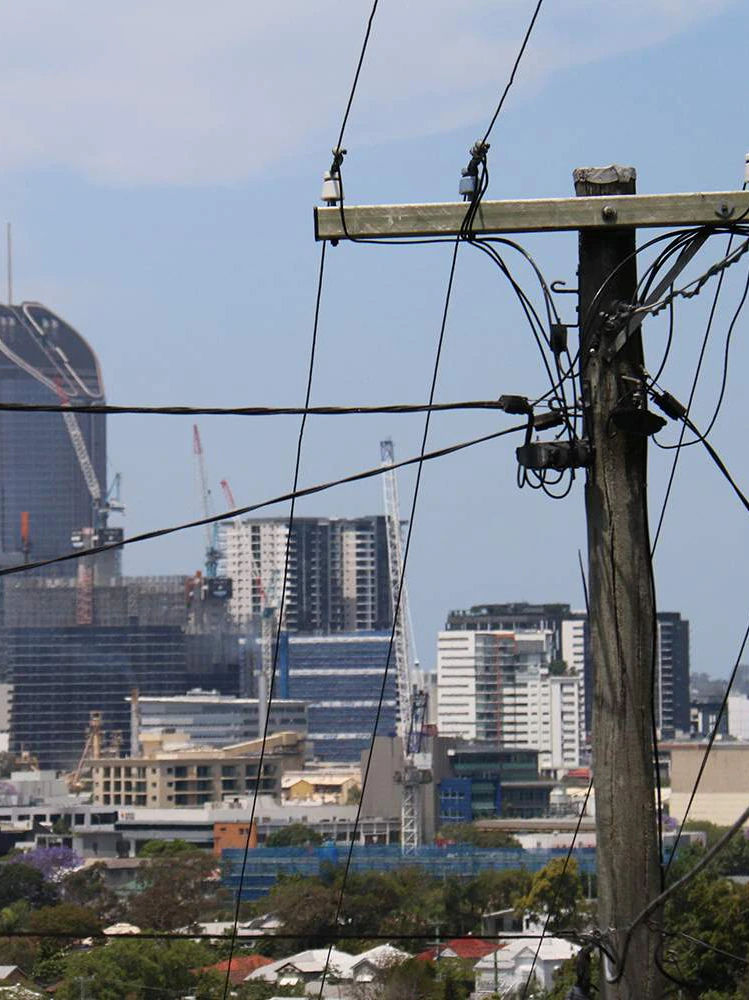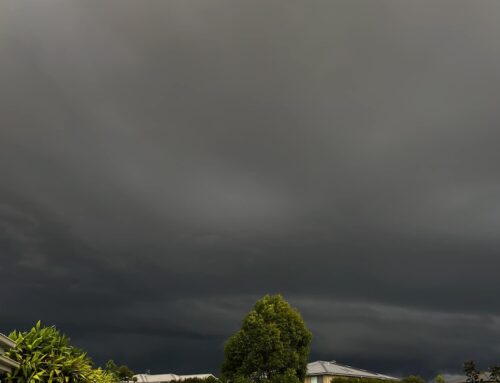To reduce emissions, incorporate new technology and energy sources, Australia needs a new electricity system.
Key points:
- Rooftop solar and renewable energy is making the power grid more complicated
- The Liberal Party is focusing on new technology to lower prices and reduce carbon emissions
- Labor wants big polluters to pay more for failing to reduce emissions and to fund community power projects
The grid of the future needs to be more stable, less centralised and handle large amounts of renewables.
The question this election is how to build it.
Brisbane company eleXsys wants to help transform the grid.
It is making equipment to handle large amounts of electricity being fed back in by rooftop solar.
“The grid is a one-way grid,” executive director Richard Romanowski told the ABC.
“It sends energy from the coal power or the solar farm into the city, but when you want to send energy backwards, it has a limit.
“It only lets 15–20 per cent of the energy go backwards.
“We fix that — we allow for 100 per cent energy going backwards — and that then allows us to decarbonise the whole world very fast and cheaply.”
The company is assembling products by hand in an old petrol station in Brisbane, but a government grant will help them move to a purpose-built factory soon.
“The federal government grant is a huge leg-up to help us get going – it’s phenomenal to get it,” Mr Romanowski said.
The Coalition said the grant was an example of its “technology, not taxes” approach to decarbonisation.
It has made its own investments in grid infrastructure and is funding new gas and hydro power stations.
Labor is promising to transform the grid faster by creating a new body called Rewiring the Nation.
It would provide $20 billion of low-cost finance for power companies to build new transmission infrastructure, allowing them to connect more cheap renewables sooner.
“Rewiring the Nation will cover its real costs, not deliver a commercial return to government,” Labor’s Powering Australia policy stated.
“This will lower the cost of the upgrade, helping to ensure consumers get the lowest possible price, by shielding them from the risk of gold-plating in the necessary upgrade of transmission projects.”
Labor said its plan aligned with the blueprint of the Australian Energy Market Regulator, but the Coalition said it would increase power prices.
Green Energy Markets analyst Tristan Edis said some of Labor’s promised spending may be unnecessary.
“Their main policy for building new transmission… some of that money could be better spent,” he said.
Contrasting plans to cut carbon emissions
The Coalition has also committed to new generation projects, including carbon-emitting gas power and the pumped hydro power scheme, Snowy 2.0.
“[The Coalition is] delivering reliable generation to support continued growth in renewables, empowering businesses and communities to make choices on their energy needs, making targeted investments in critical transmission projects where that stacks up for consumers, and implementing key reforms to protect consumers and deliver a fit-for-purpose post-2025 market design,” a spokesperson for Energy Minister Angus Taylor told the ABC.
But Mr Edis said the Coalition’s policy did not do enough to lower emissions.
“They say they’re committed to net zero but they’ve not put in any policies to require industry to achieve that,” he said.
“Industry is saying… we need a clearer legal framework.”
In contrast, Labor wants to change the rules for Australia’s biggest polluters — tightening something introduced by the Coalition called the “safeguard mechanism”.
This key policy element would make polluters pay more for failing to reduce emissions, by gradually reducing the level of penalty-free emissions, or “baselines”, allowed over time.
“[This is] a really good idea. It’s actually supported by even a number of the big polluters and it’s just sensible,” Mr Edis said.
Labor is also proposing to fund around 400 new community batteries for households that cannot afford their own.
It is also proposing building 85 shared solar arrays — at a total cost of $100 million — to help people access renewable energy.
Energy consultant Rachel Brdanovic, who works on community energy projects, told the ABC they were sensible ideas.
“They’re kind of crunch points for the community in terms of people who want to put solar on will, people who can afford batteries will, but to get those things happening at a community level definitely needs government input,” she said.
But they did not go as far as Labor’s 2019 policy of funding household batteries, to reach a target of 1 million across Australia.
“It’s sort of a token distraction. The scale involved is too small to make a meaningful difference,” Mr Edis said of the new policy.
Split on where power prices are going
Where it all matters to voters is in terms of power prices.
The Coalition says it has already brought them down.
But the wholesale price of energy is going up because the price of gas is increasing and coal power plants have cut their output.
The Australian Energy Market Regulator says renewables will lower energy prices in the next few years, as long as the upgrade of the grid is managed well.
Space to play or pause, M to mute, left and right arrows to seek, up and down arrows for volume.
Loading form…




